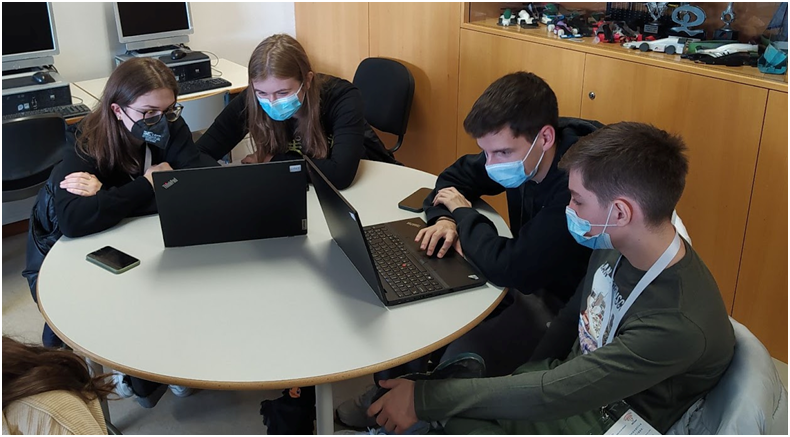UNIT 1: PROJECT-BASED LEARNING

2.1.1 Theory content
Project-based learning (PBL) involves students designing, developing, and constructing hands-on solutions to a problem. The educational value of PBL is that it aims to build students’ creative capacity to work through difficult or ill-structured problems, commonly in small teams. These are the main steps of a PBL:
- Identifying a problem
- Agreeing on or devising a solution and potential solution path to the problem (i.e., how to achieve the solution)
- Designing and developing a prototype of the solution
- Refining the solution based on feedback from experts, instructors,
2.1.2 Practical Activity
Length of the activity : about two hours
The students of a class are divided into teams with a maximum of five students each. Four of the students sit at the same table to work together whereas one of them is connected to the rest of the team at a distance (sitting in another room for example with his own computer). Three tasks with different scores are assigned and the teams have to choose two of them; they need to carry out the task and prepare a presentation with google slides showing how they solved the problem and the way they worked.
They start working together. A good strategy to use (but students shouldn’t be told about it, they need to understand by themselves) is to immediately share the document to work on (presentation with google slides) and organize their work by splitting the tasks they have to carry out.
At a certain point (after about 45 minutes, it depends on the length of the lesson, if one or two hours)) the connection between the four students and the ‘home’ student (the student sitting at a distance) is interrupted. But the student ‘at home’, who is now forced to work alone, can go on because the team has previously decided the strategy to carry out the task and what each member of the team should do..
After half an hour the students of the team are connected again and they can check what they’ve done so far. This disconnection-reconnection process can be repeated more times
Different work Strategies:
- identification of a leader in the team;
- no leader is identified in the team;
- division of the team into two subgroups; each of them carries out one of the two tasks;
- The whole team works on both tasks. The different activities, such as the research of the information on the internet and the preparation of the presentation) are divided among the five members.
EXAMPLE

2.1.3 Glossary
Project-based learning (PBL) involves students designing, developing, and constructing hands-on solutions to a problem

 English
English Português
Português Română
Română Italiano
Italiano Macedonia
Macedonia




